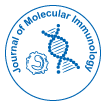Our Group organises 3000+ Global Conferenceseries Events every year across USA, Europe & Asia with support from 1000 more scientific Societies and Publishes 700+ Open Access Journals which contains over 50000 eminent personalities, reputed scientists as editorial board members.
Open Access Journals gaining more Readers and Citations
700 Journals and 15,000,000 Readers Each Journal is getting 25,000+ Readers
Indexed In
- RefSeek
- Hamdard University
- EBSCO A-Z
Useful Links
Related Subjects
Share This Page
Alejandro Aballay

Alejandro Aballay
Department of Molecular Genetics and Microbiology
Duke University Medical Center
USA
Biography
Alejandro Aballay earned his bachelor’s degree in Pharmacy from Juan A. Maza University, in Mendoza, Argentina, in 1994. During this time, he worked as an undergraduate student at Nacional de Cuyo University, in Mendoza, Argentina, where he studied soil bioremediation. He finished his M.S. equivalent studies in 1995 and started exploring the machinery that governs early steps in endocytosis at Nacional de Cuyo University. During this period, he received a World Bank fellowship to complement his studies in endocytosis by working as a summer student for two consecutive years at Washington University, in St. Louis, Missouri. In 1998, he earned his Ph.D. at Nacional de Cuyo University and received a Pew Fellowship to move to St. Louis, where he continued his studies in endocytosis at Washington University. In 1999, following an interest in bacterial pathogenesis he developed while studying the intracellular transport of Brucella abortus when he was a graduate student, he moved to Boston to join the Ausubel laboratory at Harvard Medical School. Dr. Aballay moved to Durham in 2002 to join the Department of Molecular Genetics and Microbiology, where his studies focus on what makes bacteria pathogenic and hosts resistant.
In the Ausubel laboratory, Dr. Aballay developed a novel pathogenesis system utilizing the simple well-studied nematode Caenorhabditis elegans and the common human bacterial pathogen Salmonella enterica. Salmonella is well known for its ability to cause food poisoning. Nematodes like C. elegans eat bacteria and surprisingly C. elegans is killed when it is provided S. enterica as a food source. This killing is accompanied by a persistent infection of S. enterica in the C. elegans intestine. Importantly, Dr. Aballay has shown that several well-studied S. enterica virulence factors required for causing disease in mammalian hosts are also required for C. elegans killing. This validates the use of C. elegans as a host to model Salmonella infection in mammals, including humans.
Dr. Aballay’s laboratory takes advantage of the compromise between complexity and tractability of the C. elegans–S. enterica pathogenesis model. The focus of the laboratory is to use C. elegans as a host to screen thousands of bacterial clones from mutagenized libraries to identify novel Salmonella virulence factors and to address how they alter host signaling pathways. Since several components of innate immunity are conserved among different organisms throughout evolution, his group is also exploiting the genetic and genomic resources available for C. elegans to study the basis of the immune response.
Dr. Aballay is a recipient of a number of awards, including: 2013 American Association for the Advancement of Science (AAAS) Fellow, 2009, Neuroimmunology of Brain Infections and Cancers Award, 2009 Howard Hughes Medical Institute (HHMI) Early Career Scientist Competition-Semifinalist, 2005 ICAAC Young Investigator Award, 2003 Whitehead Scholar in Biomedical Sciences, 1998 Pew Foundation Postdoctoral Fellowship.
Research Interest
Molecular Genetics and Microbiology, Immunology

 Spanish
Spanish  Chinese
Chinese  Russian
Russian  German
German  French
French  Japanese
Japanese  Portuguese
Portuguese  Hindi
Hindi 